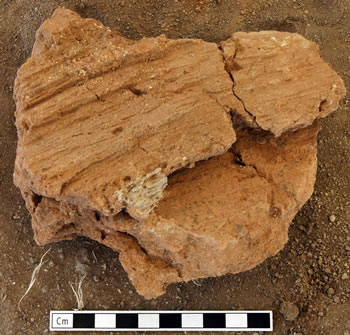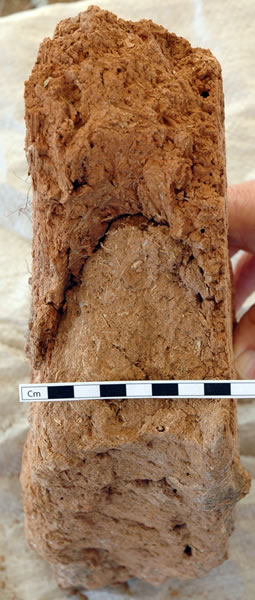ARCHITECTURE
Mirjana Stevanovic with contributions by Ina St. George.

Figure 38. A variety of mud brick shapes and sizes have been recorded including a new data set made up of fragments of daub with massive traces of timber. (a) daub with possible tree-bark impressions
(b) an example of the coil technique. |
The 2005 season was a particularly productive year for research on architecture, especially regarding the finds, and in terms of data management and analysis. Numerous new houses have been excavated but one of them (building 52), which was heavily burnt, stands out in terms of richness of information on architecture and especially on building materials. Twelve bricks, one hundred and sixteen daub fragments, and five wall plaster fragments from this building were recorded and studied. The preliminary analysis of these materials enriched our understanding of how diverse the building materials can be at this site. A variety of mud brick shapes and sizes have been added to those that we have encountered before, as well as their manufacturing techniques. A completely new data set made up of fragments of daub with massive traces of timber and most likely belonging to the roof has been assembled. Building 52 also illustrates how fire can preserve clay-derived and other associated building materials that typically do not get preserved in un-burnt buildings. In addition, the members of the team worked on developing the data based systematic study of architecture. The database once fully established should be one of the most complex material corpora in the project. This season a major part of the database committed to building materials was developed. With the help of conservator Ina St. George work on the experimental house continued this season with the addition of a new wall painting, and the application of more layers of wall and floor plasters.
